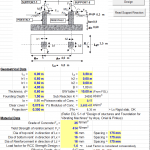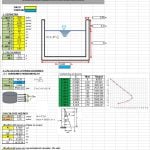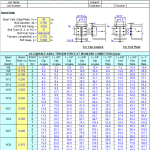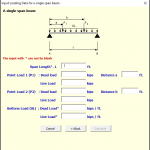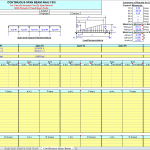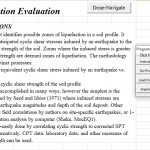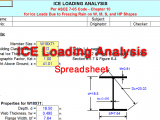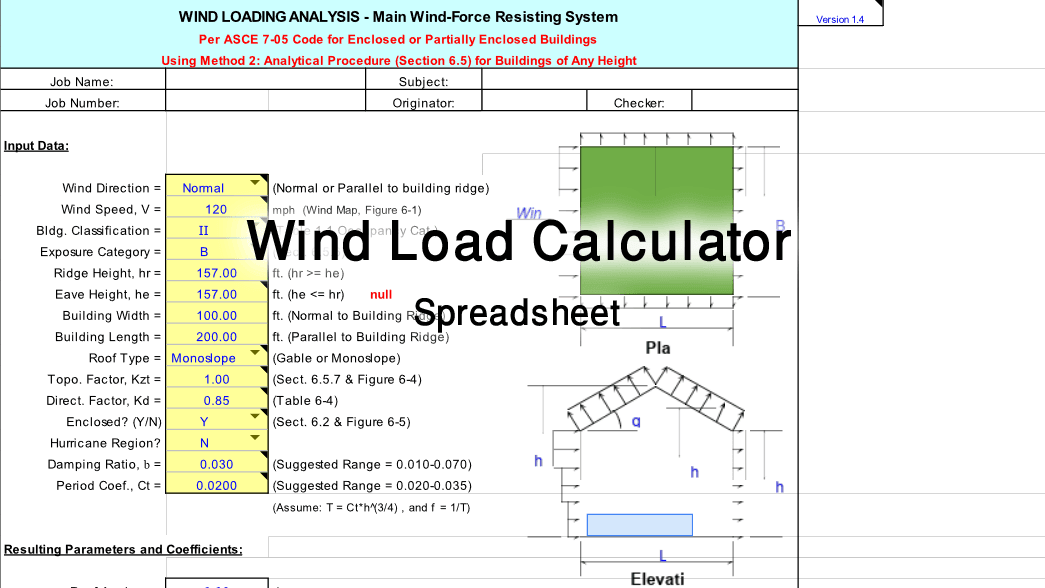
Wind Load Calculator Excel Spreadsheet
13 December 2018Wind Load Calculator Excel Spreadsheet
ASCE705W ASCE 7-05 Written for analysis of air load for code and structures for Spreadsheets program written in MS-Excel. In particular, air pressure is calculated by coefficients and corresponding parameters and net design calculations or calculation of air pressure.
Wind Load Calculator
This program is a workbook with the nine (9) worksheets described below.
*Simplified – Analysis using simplified method for improving home with <= 60 ‘
*MWFRS (low-rise) – main air-power resistance system for low-end house <= 60 ‘
*MWFRS (any HT) – the main wind power protection system for any height building
*Wall C and C wall components and cladding analysis
*Roof C and C – Roof material and cladding analysis
*Stack and Tank – Condensed Chimney, Stack and Vertical Tank Analysis
*Open framework (no roof) – Analyze the open framework without ceiling
*Wind Maps – Basic Wind Speed Maps (Figure 6-1 for code ASCE 7-05)
*For more information on load type, read more about load count topics.
Program ideas and limitations:
1. This program uses the “ASCE 7-02 Air Load Regulation Usage Guidelines” to determine the external air pressure group used in outdoor air pressure assistants, ‘GCP’, Wall C and C and Roof C and C worksheets. . (Note: A version of this document that was applicable to the SSC 7-05 code was not available.)
2. Workshops for “MWFRS (any HT)”, “Wall C and C”, and “Roof C and C” are applicable for home with an average ceiling height of up to 500 feet.
3. For “simplified” analysis, it is applicable to low-growth house by meeting the criteria of Section 6.4.1.
4. In the worksheet for simplified analysis, the design is calculated for each side of the MWFRS air load. MDFRS design design is considered to be loaded in total length of the building length or length.
5. Worksheet for “MWFRS (Low-Rise)” is applicable for low-rise home defined in section 6.2.
6. The “open structures” worksheet is applicable for open frames without a 500 ft tall roof. It can be used for open-process-type structure and pipe / utility racks and bridges.
5. User defined steps can be used to define air pressure distribution in the worksheet for ‘Z’, “MWFRS (any HT)”, “Wall C and C”, and “Roof C and C”.
7. “May MWFRS (no HT)”, “Stack and Tank” and “Open Structures” worksheets can handle “strict” and “flexible” buildings and structures. For “strict” buildings or structures, this program uses a counting value of 0.85 or a glass effect factor, ‘g’ code code code 6.5.8.1. For “flexible” buildings or structures, this program calculates the ‘gf’ according to the vibration section 12.8.2.1, code based on the approximate time of code 6.5.8.2, where the formula X ‘X’ = City * H ^ X 0.75 is considered to be.
8. Workshops for “Wall C and C” and “Roof C and C” for flat roof buildings, Galilei roof buildings with roof corners <= 45 degrees and ceiling corners with monosclosure roof buildings <= 3 degrees.
9. “Stack and Tank” worksheet is applicable to the 600 feet long arch welded structure.
10. This program has several “comment boxes” that contain information including input or output items, usage of equations, data tables, etc. (Note: The appearance of the “Comment Box” is indicated by the “red triangle” in the top right corner of a cell, in particular the mouse pointer to move the contents of the “comment box” to the desired room.)

